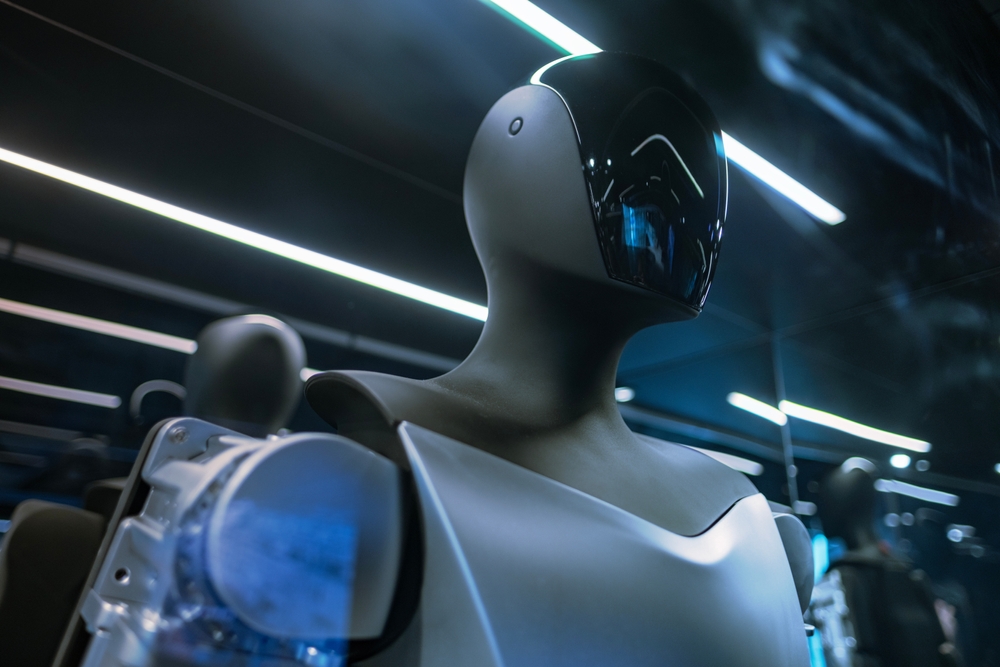
Elon Musk, the trailblazing CEO of Tesla, once again captured the world’s attention on Thursday with his bold vision of an “age of abundance.” Musk’s grand announcement promised a future filled with self-driving cars that lack steering wheels, urban spaces transformed from parking lots to parks, and robots mingling with the human population. It was a dazzling spectacle—typical of Musk—complete with futuristic designs and audacious promises that have become synonymous with his brand.
Musk’s Unveiling Event in California
The much-anticipated event took place on a glittering California stage, where Musk revealed Tesla’s latest self-driving innovations. Among them were the sleek robotaxi and the larger, more spacious “Robovan,” a driverless vehicle designed for transporting people or goods. Both vehicles embraced a polished, sci-fi aesthetic, with shiny metallic finishes that seemed to come straight out of Blade Runner. Musk did, however, assure the audience that his future wouldn’t be as dark as the dystopian universe depicted in the iconic film.
Big Promises, but Can Musk Deliver?
As with many of Musk’s past announcements, the ambitious timelines raised some eyebrows. Just five years ago, he predicted that robotaxis were merely a year away. Standing in front of the in-person crowd and millions of viewers livestreaming on his social platform X, Musk admitted with a chuckle, “I tend to be a little optimistic with time frames.”
Still, the crowd was undeterred. Even though the event started 53 minutes late, enthusiasm remained high as they cheered Musk’s vision and eagerly awaited a ride in the 50 self-driving vehicles on display.
Full Self-Driving: A Reality Soon?
Tesla has long offered its Full Self-Driving (FSD) feature at $8,000, but it still requires a human driver to be seated, ready to take control. Musk, however, predicted that next year, Teslas equipped with FSD would operate without human intervention in states like California and Texas—assuming regulatory approval.
The jewel of his presentation? The Cybercab—a driverless car with no steering wheel, pedals, or traditional controls. “It’ll be like sitting in a comfortable little lounge,” Musk said, predicting the vehicle would hit the market by 2026. The Robovan, another eye-catching prototype, could carry up to 20 passengers or cargo, but its timeline remained vague.
Skeptics Weigh In
While Musk insists Tesla’s self-driving technology is already safer than human-driven vehicles, independent testing tells a different story. AMCI Testing found that drivers needed to intervene every 13 miles on average. Analysts like Gene Munster of Deepwater Asset Management remain cautious, noting that even a 97% success rate isn’t enough. “To go from 95 or 97% to 99% is really hard,” Munster explained, adding that regulators will likely demand near-perfect results before approving fully autonomous cars.
Is the Future Close, or Far Off?
Musk’s grand vision is undeniably captivating, but the reality may take longer to materialize than promised. Even if Tesla manages to perfect the technology within two years, Munster suggests regulatory approval could take another two to three years. For now, the world watches and waits, eager to see if Musk can finally deliver on his promises of a future filled with autonomous cars and robots walking among us.
To read more about Musk’s futuristic vision and Tesla’s upcoming products, visit CNN’s article.

 Get in Touch
Get in Touch 


